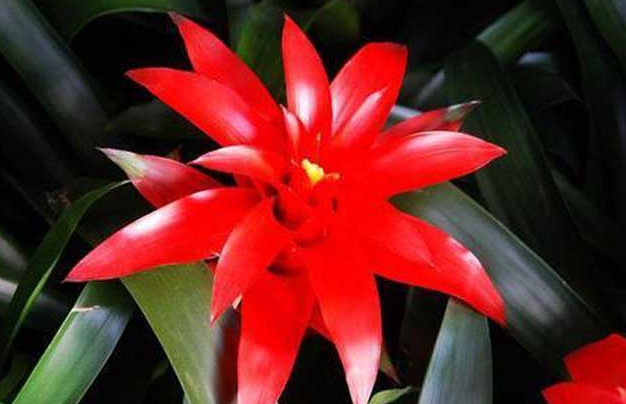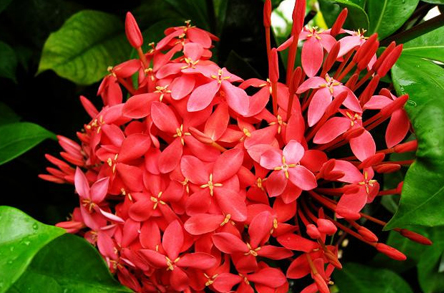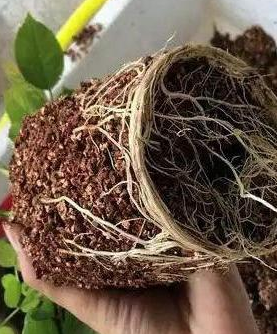How to grow water tower flowers? can I put them in the room?
Water tower flower, this is a lot of people like breeding, this water tower flower is not generally good-looking, how to raise it? Can I put the flowers in the water tower indoors?

How to grow water tower flowers:
1. Heart rot and root rot: in addition to paying attention to the problems of substrate, watering and water quality, in addition to paying attention to the problems of substrate, watering and water quality, 75% evil frost manganese and zinc 400 times solution or 40% ethyl phosphine aluminum 400 times solution can be used to irrigate the leaf tube once a month for 3 times. The seedlings can be soaked in the 800-fold solution of 40% ethyl phosphine and aluminum for 10 minutes, and then dried in the shade and then put on the basin.
2. Leaf tip yellowing and withering: pineapple leaf tip yellowing and withering may be caused by too strong alkalinity of irrigation water or high calcium and sodium content, too low air humidity, excessive fertilization or high concentration of liquid fertilizer, poor substrate drainage and so on. It is better to maintain more than 5 ℃ in winter, otherwise cold injury may occur. After drying, the disease becomes scorched and scorched, and severe cold damage causes the plant to die.
3. Scale insects: the shell has not yet thickened when the eggs are just hatched, and the effect of spraying is the best, which can be controlled by common organophosphorus pesticides such as old dichlorvos, malathion, fenitrothion and so on. When the scale insect is fixed, it can only be controlled by internal absorption pesticides, such as dimethoate, omethoate, acephate and so on. A small amount of shell insects can also be scraped off manually with their fingernails.
4. Red spiders: red spiders make a living by piercing the epidermis of ground leaves and sucking juice, causing damage to the growth of plants. In addition to common organophosphorus pesticides such as imidophos, dimethoate, omethoate, dichlorvos and so on, there are acaricides specially used to kill red spiders, such as triclofenac, propargite, acarate, bromoacarate and so on.
5. Pocket moth: when the bag moth damages the pineapple leaves, it usually eats the mesophyll, leaving only a transparent lower epidermis, which dries up and becomes out-of-date into holes or gaps or broken. There are many pesticides to control pocket moth, such as trichlorfon, dichlorvos, dimethoate, omethoate, malathion, fenitrothion and so on.
6. Caterpillars: the larvae of poisonous moths are often called caterpillars, which can damage leaves and flowers and eat them short or cut off. Common organophosphorus or pyrethroid insecticides can be used to kill caterpillars.
7. Snails: snails can be used to control snails by spreading raw lime powder on the ground, or by catching them manually, or by using leaves, weeds and vegetable leaves as trapping heaps, and snails are ambushed under the trapping heaps before dawn, and then caught centrally.
8. Spodoptera litura: the larvae mainly damage the flowers of pineapple and feed on petals, stamens and pistils. Usually hide in the basin soil, the bottom of the basin and other dark places during the day, come out at dusk to feed, but when it is cloudy and rainy, you can also eat outside during the day. Pesticides against caterpillars can be used to control Spodoptera litura larvae.
Can I put the flowers in the water tower indoors?
Suitable, the water tower flower is a good indoor foliage plant.
Water tower flowers can be cultured indoors, and the breeding methods of this water tower flowers are also introduced, so come and raise a few plants as soon as possible.
Water tower flower (Billbergia pyramidalis) alias Flame pineapple, Bill Jian Ya, red algae pineapple, trough pineapple, red pen pineapple. Belongs to the pineapple family, the water tower flower genus. Perennial evergreen herbs, succulent plants, fond of warm, moist, semi-shady environment. I can't bear the cold. Slightly resistant to drought, originally from Brazil. It has been introduced and cultivated in China in recent years, which is a good indoor foliage plant.
Second, the morphological characteristics of water tower flower:
Perennial evergreen herb with very short stems, broad lanceolate leaves, acute pointed, serrulate, hard leathery, bright green, thick horny layer and absorbing scales on the surface. Spikes erect, taller than leaves, bracts pink, Corolla scarlet, petals revolute, margin purplish. The leaves are rotated and clustered from the rhizome, the base is rosette, the base of the leaves clasp to each other, and the center is cylindrical. The leaf tube can hold water without leakage, shaped like a water tower, so it is named "Water Tower Flower", which is more than blooming in winter and spring, belonging to ornamental flowers.
The culture method of water tower flower
1. Soil: the growth of water tower flower does not require high soil quality, and it is better to use slightly acidic sandy loam with rich humus and good drainage and ventilation, but avoid calcareous soil.
2. Sunshine: the water tower flower lives mainly in the shade of the bushes or in the northwest of the hillside, and can accept part of the intermittent direct sunlight every day. So if it is maintained in direct sunlight in summer, it will grow very slowly or enter a semi-dormant state, and the leaves will slowly turn yellow and fall off due to burns, so pay attention to cover 50% of the sun. In other seasons, because the temperature is not very high, the water tower flower can be given direct sunlight to facilitate its photosynthesis and the formation of flower buds and flowering.
Water tower flower variety
Varieties of water tower flower: 1. Narrow leaf water tower flower
Alias Chuanhua Bill see Asia, drooping water tower flower, Chuanhua water tower flower, pineapple. It is a common species of the same genus. Leaves sword-shaped, slender, rigid, serrulate. The flower stem is slender and elongated. The spike is short and drooping, and several large fresh rose red bracts are very beautiful. It is more resistant to cold, and the low temperature of 2 ℃ in a short time will not cause frost damage.
Varieties of water tower flower: 2. Rainbow leaf water tower flower
It is a cultivated variety of Calyx water tower flower. The leaves are red and dotted with white or yellow spots.
Ramet propagation of Flos Lonicerae
The method of ramet propagation of water tower flower:
Ramet propagation is the main breeding method of water tower flower, and it is also suitable for family use. The mode of operation is simple, as long as you know it, you can operate it correctly.
1. Ramet time of water tower flower
The ramet time of water tower flower is best carried out in early spring in February or March, when the soil has been thawed, which is better for the plant growth of water tower flower.
2. The ramet method of water tower flower.
The ramet step of Shuita flower is mainly to take the mother plant out of the flowerpot, shake off the excess potted soil, separate the root system as much as possible, and cut it into two or more plants with a sharp knife. each plant should have a considerable root system, and its leaves should be pruned properly to facilitate survival.
Management method of water tower flower culture
I. temperature management
Because it is native to the tropics or subtropics and likes the environment of high temperature and humidity, the temperature in winter is very strict. The water tower flower can not survive the winter safely when the temperature is below 3: 6 ℃, and it can be tolerated when the temperature is above 35 ℃ in summer, but its growth will be temporarily hindered. The most suitable growth temperature is 18-30 ℃. 1. In the growth environment of more than 34 ℃, the correct treatment method is:
(1) strengthen the air convection as much as possible to facilitate its transpiration and lower the temperature in the body.
(2) spray the leaf surface 2-4 times a day: the higher the temperature, the more times. Spray less or not when the temperature is low or on rainy days.
(3) spray wet the ground around it, which is very helpful to reduce the ambient temperature around it.
2. In the growth environment below 6 ℃, the correct treatment method is:
(1) wrap it in a thin film for the winter, but uncover the film every two days when the temperature is high at noon to let it breathe.
(2) move it to a heated room for the winter
Related encyclopedia
Pocket scale non-woven bag lantern bamboo shoots crab feet red rice note3ykk zipper ybs zipper mountain cherry climbing wall plum field decision tomorrow winter plum green pine watch omega Longine watch children's building blocks rhododendron roll stick fruit Annona
- Prev

How can I keep the flowers indoors?
Immortal pill flower, this is to bloom, this immortal pill flower bloom is a large flower, very good-looking, how to cultivate immortal pill flower method? How can the elixir flower be kept indoors? How can the elixir flower be cultivated? 1. Temperature: The elixir flower likes sunshine, likes warmth, and is not cold.
- Next

Can rooting powder be used in cutting propagation of rose?
Roses, which many people like very much, this rose is the symbol of love. What is the method of cutting propagation of roses? Can rose cuttings use rooting powder: 1, branch treatment, pick up the branches into about 10 cm long, each branch needs to have bud points, pay attention to oblique incisions
Related
- Fuxing push coffee new agricultural production and marketing class: lack of small-scale processing plants
- Jujube rice field leisure farm deep ploughing Yilan for five years to create a space for organic food and play
- Nongyu Farm-A trial of organic papaya for brave women with advanced technology
- Four points for attention in the prevention and control of diseases and insect pests of edible fungi
- How to add nutrient solution to Edible Fungi
- Is there any good way to control edible fungus mites?
- Open Inoculation Technology of Edible Fungi
- Is there any clever way to use fertilizer for edible fungus in winter?
- What agents are used to kill the pathogens of edible fungi in the mushroom shed?
- Rapid drying of Edible Fungi

